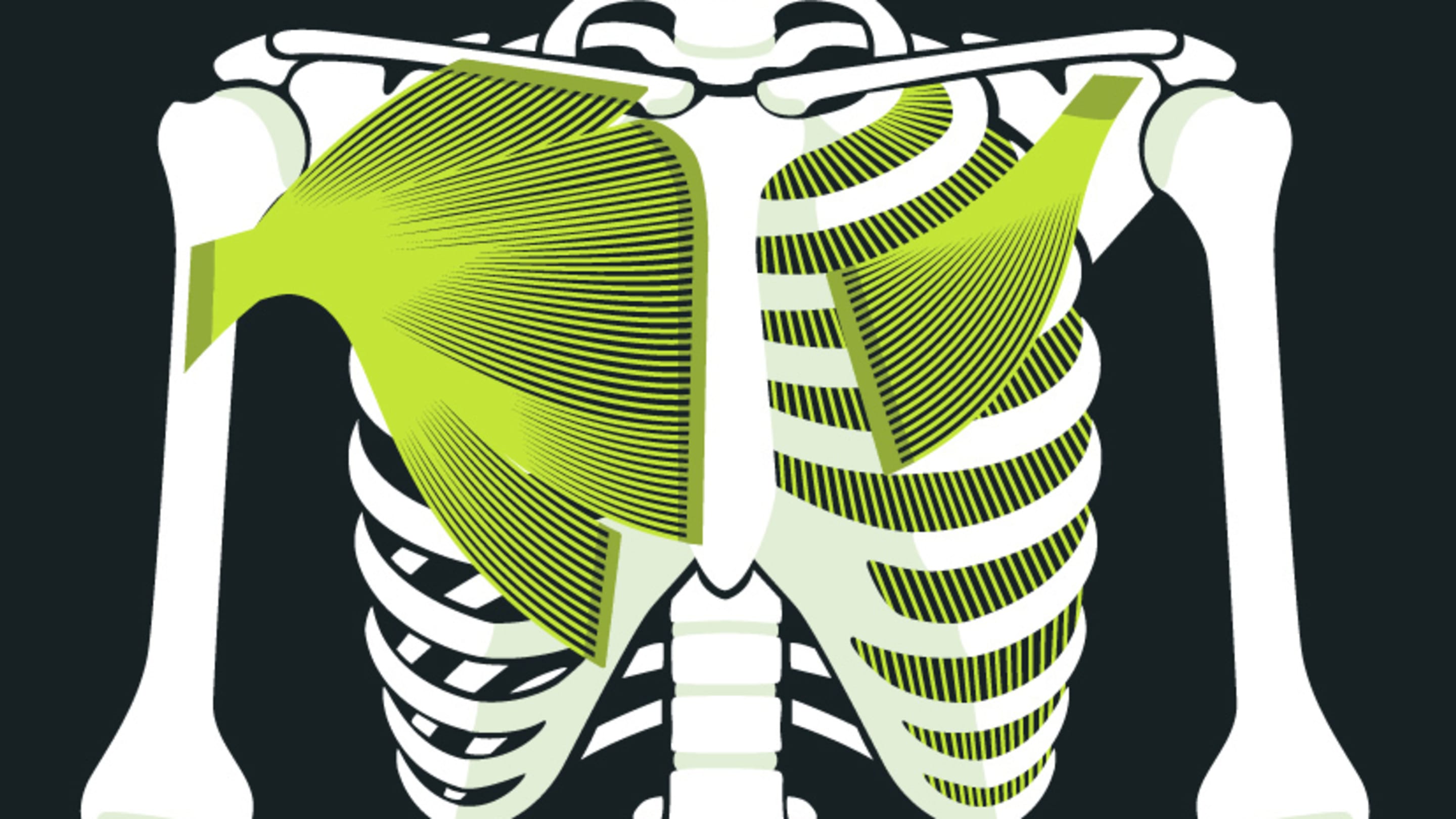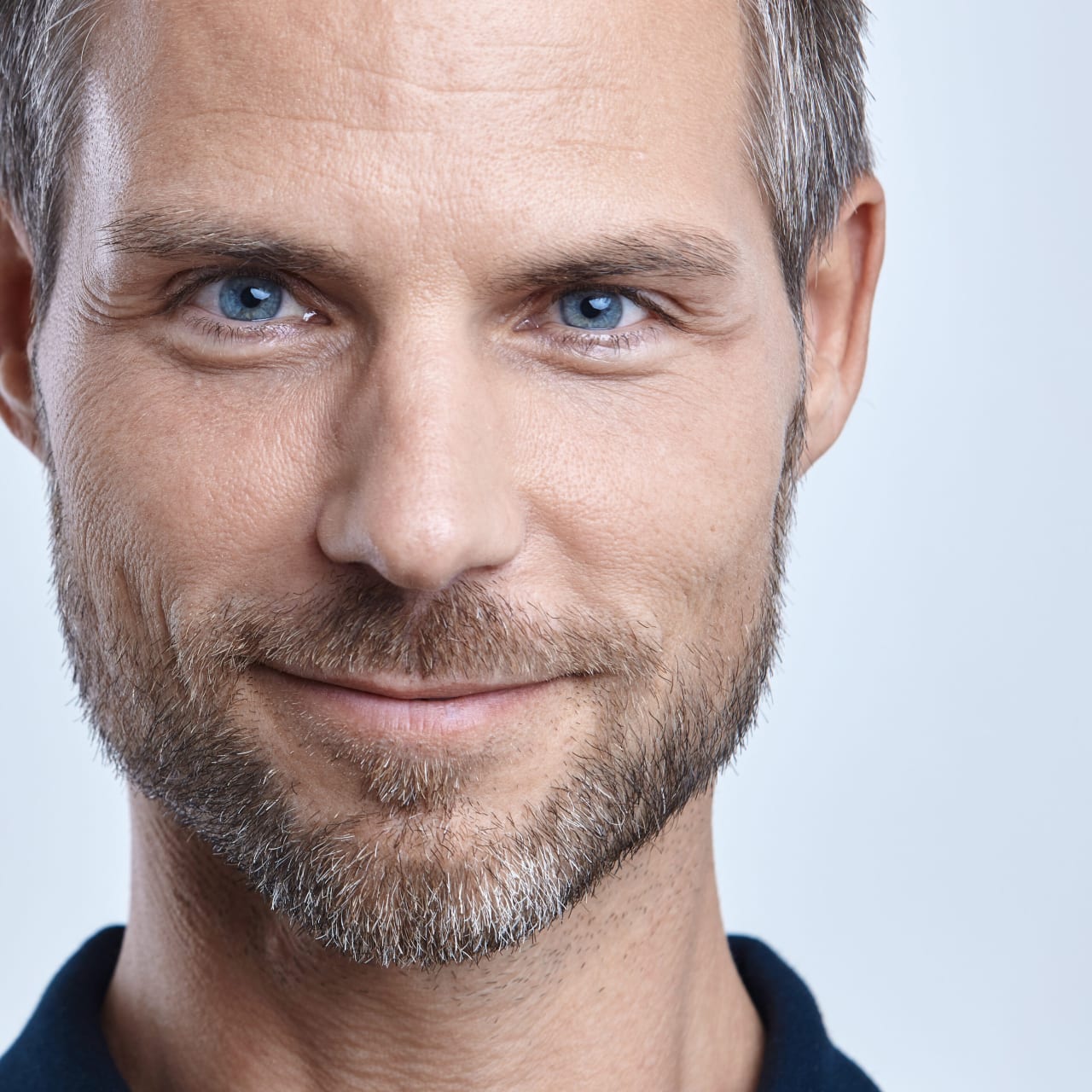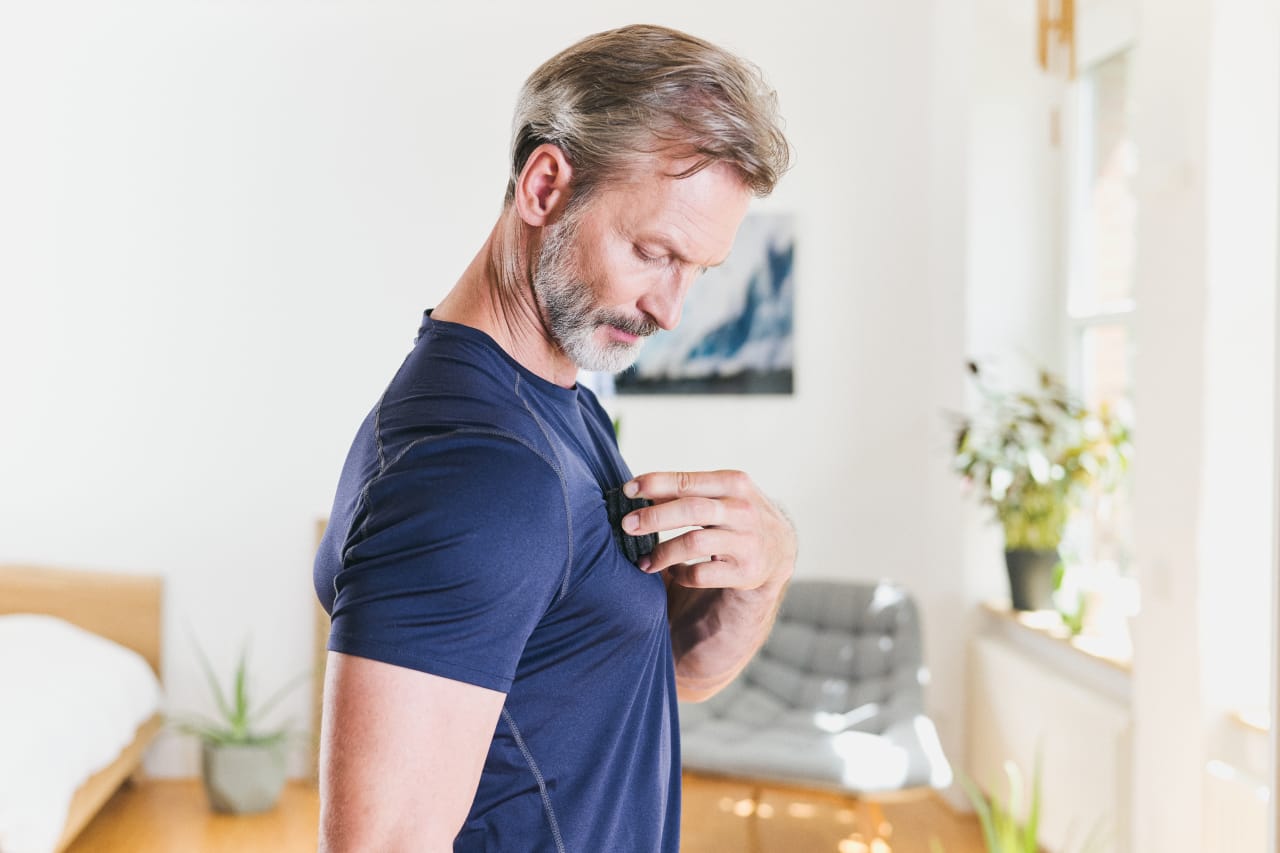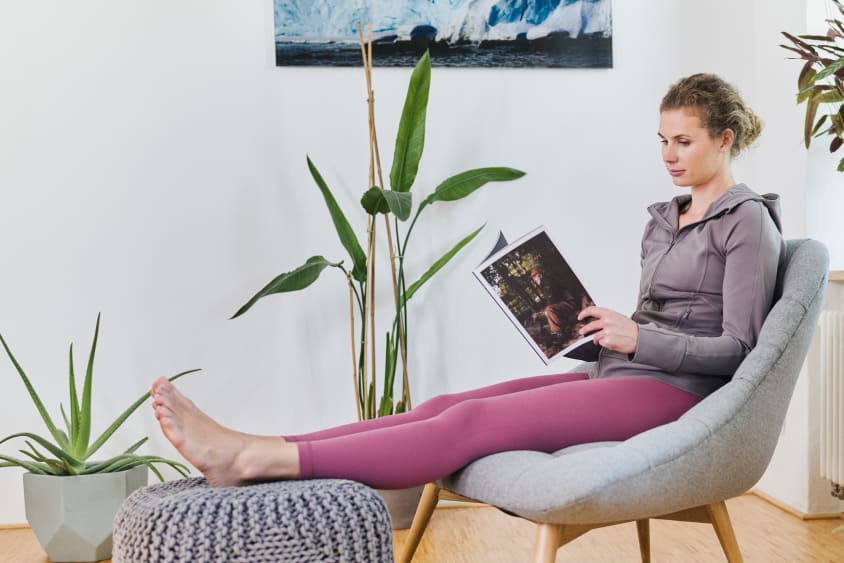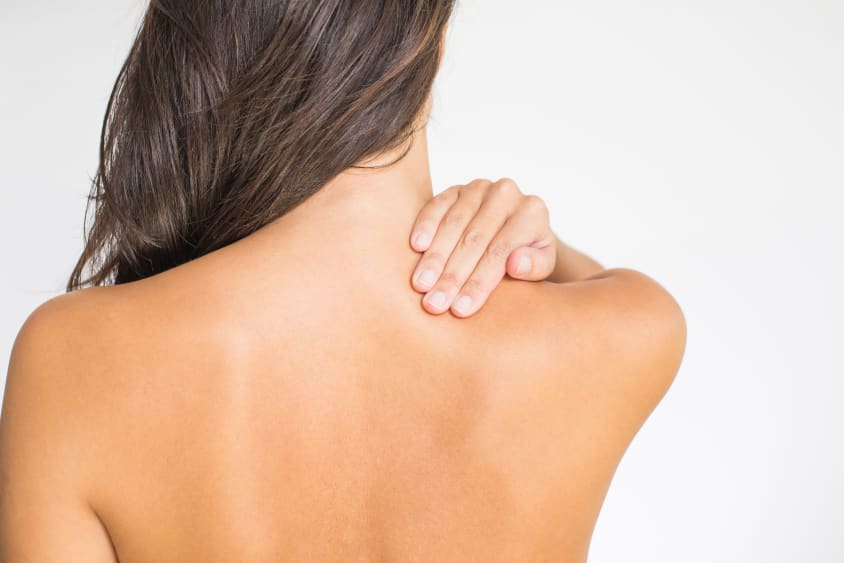
Chest pain - when feel a pulling or pain in the chest.

A pulling feeling in your chest or pain in your ribcage (thorax) can be down to various causes. Here, you’ll learn what the causes could be and when you can help yourself.
Remember: pain in your chest area shouldn’t be taken lightly. It’s crucial that you get this checked by a doctor to rule out any organ problems, such as with your heart, lungs, or with organs further from your ribcage. If you feel strong pressure in your ribcage with radiating pain in your shoulder and arm area that lasts several minutes, this could mean it’s an emergency like a heart attack. It’s important to take this seriously. Usually, the medical team will check your blood for signs of heart muscle damage, blood clots and inflammation. Luckily, over 90% of this kind of discomfort isn’t to do with organs, but is only “functional”. This means that your chest pain probably comes from excessive tension in your muscles and fascia, or restrictions to the spine and ribs.
Has your doctor ruled out an organ problem? Then you may find the following information and exercises helpful. They focus mainly on discomfort in the chest area caused by tension, which you often feel as thorax pain or a pulling feeling in your chest.
01. What is chest pain?
Pain in your chest varies according to its cause. For example, it could be more superficial, structural pain in the chest wall, or pain caused by internal organs. You should always take chest pain seriously, because the ribcage (thorax) holds vital organs such as the heart. If emergencies have been ruled out and your pain is coming from your muscles and/or bones (musculoskeletal system), you can work to counteract the chest pain – using the targeted exercises and products from BLACKROLL®.
02. Symptoms of functional chest pain
- Pain in the chest area linked to breathing (especially when breathing in)
Functional chest pain is typically linked to breathing, and gets worse when breathing in. It radiates from a rib or nerve from the back of the body toward the breastbone (sternum).
- Movement-related, radiating pain
You can also feel the same radiating pain with small movements of your thoracic spine.
- Increased muscle tension/hardened muscles
Feeling along your spine, you will often find that your muscles are much more tense than normal. This greatly limits your movement when you bend forward and backward, and when you rotate.
- Bent posture
The chest pain you keep experiencing can mean you start to hold yourself hunched forward slightly.
03. What are the causes of chest pain?
Myofascial tension could be responsible for your chest pain. Fascia become “stuck” and muscles harden (muscle rigidity). The result: your tissues and nerves lack the nourishment they need. Metabolic waste products build up because they don’t get conveyed away as they should. In muscles and fascia, this means you get painful pressure points forming (tender points). When it comes to chest pain, these tender points are mainly in the chest muscles around the breastbone, between the ribs, and in the back muscles around the thoracic spine.
Other connected areas of myofascial tissue can also be involved, such as in the diaphragm. Sometimes, this can also be triggered by antagonistic muscles along the spine. Tension imbalance in your muscles and fascia can, over time, lead to misalignment of the skeletal system. Early preventive measures can avoid most of these issues.
Over time, the tightening and shortening of muscles around the thoracic spine block your vertebrae, as well as the joints connecting the vertebrae to the ribs, and the breastbone to the ribs. As well as causing chest pain, this can also restrict movement. The crucial factor here is to keep the area as mobile as possible. Otherwise, the network of fascia will wrap around the chest and vital organs like a corset. Prolonged sitting with your body leaning forward restricts the thoracic spine and ribs in terms of their capacity to remain upright and rotate. The mobility of the thoracic spine and especially of the ribs are essential for breathing and keeping your shoulders healthy. With every breath, your ribs should move freely and enable your ribcage to expand. If you sit a lot, your ribs will get fixed in a forward rotation and narrow your ribcage. That’s how, little by little, the fasciae in the muscles between the ribs and along the spine become “caught”, acting like a rigid suit of armor.
Other causes of chest pain and thorax pain:
- Injuries to the ribcage: bruised ribs, or fractures to the ribs, collarbone or breastbone are usually due to accidents. The ribcage is involved in breathing, which means that sneezing, coughing, or inhaling and exhaling breath are often painful if you have an injured ribcage. Rib injuries, in particular, run around the ribcage, sometimes in a belt-like pattern. During your rehabilitation phase, after your injury has mostly healed, self-massage using BLACKROLL® products can be a useful tool. It can help ease fascial adhesions and muscle tightness caused by muscle guarding, relieving postures and immobility – which, in turn, can alleviate thorax pain.
- Inflammation of the nerve roots (radiculitis)
- Locking and inflammation of vertebral joints (facet joints)
- Vertebra slipped out of position (spondylolisthesis)
- Scoliosis
- Fractured vertebrae
- Narrowing of the spinal canal (spinal stenosis)
“Luckily, over 90% of chest discomfort isn’t to do with organs, but is only ‘functional’. The BLACKROLL® products, together with the right exercises, can help you to reduce your discomfort within a matter of days. In the long term, you’ll increase your mobility and optimize your posture.” Dr. Torsten Pfitzer, holistic pain therapist and health coach
04. Here, we explain how you can relieve chest pain
- Relaxing muscles and fascia
If muscular and fascial tension have caused your chest pain, you need to smooth out the fasciae and relax tight muscles. - Mobilization
Purposeful, targeted movements of the thoracic spine help restore mobility. - Improving posture
You should also work carefully on your posture to keep your body all in one line. This helps regulate myofascial imbalances in the longer term. If we really get the hang of posture and movement, we can lessen chest pain in the long term.
